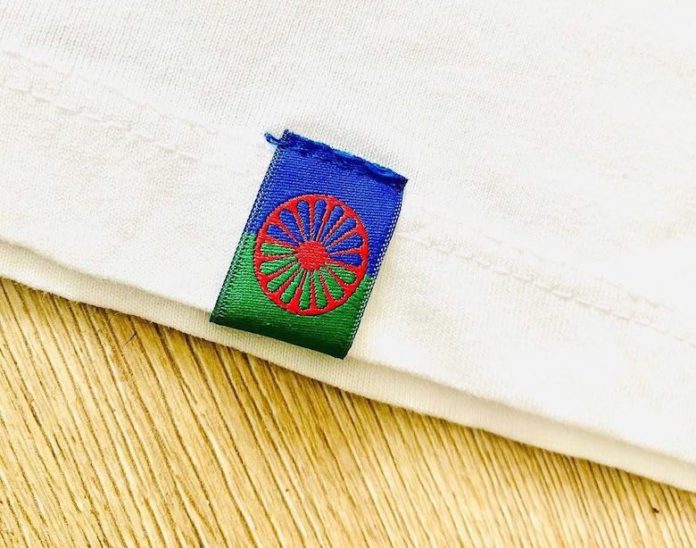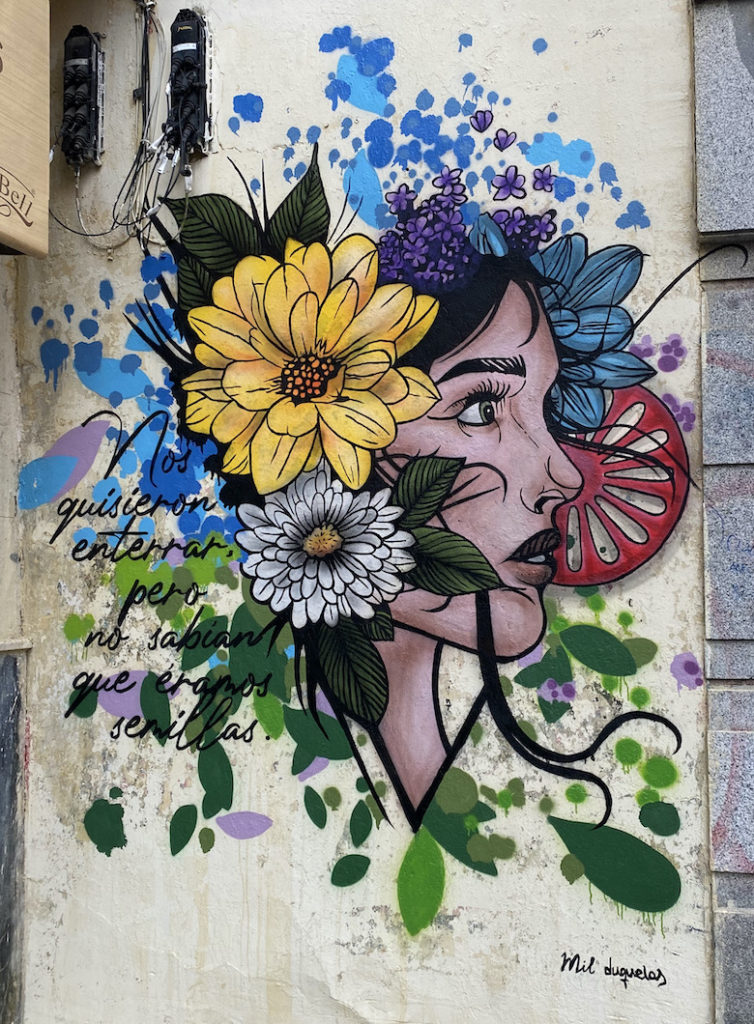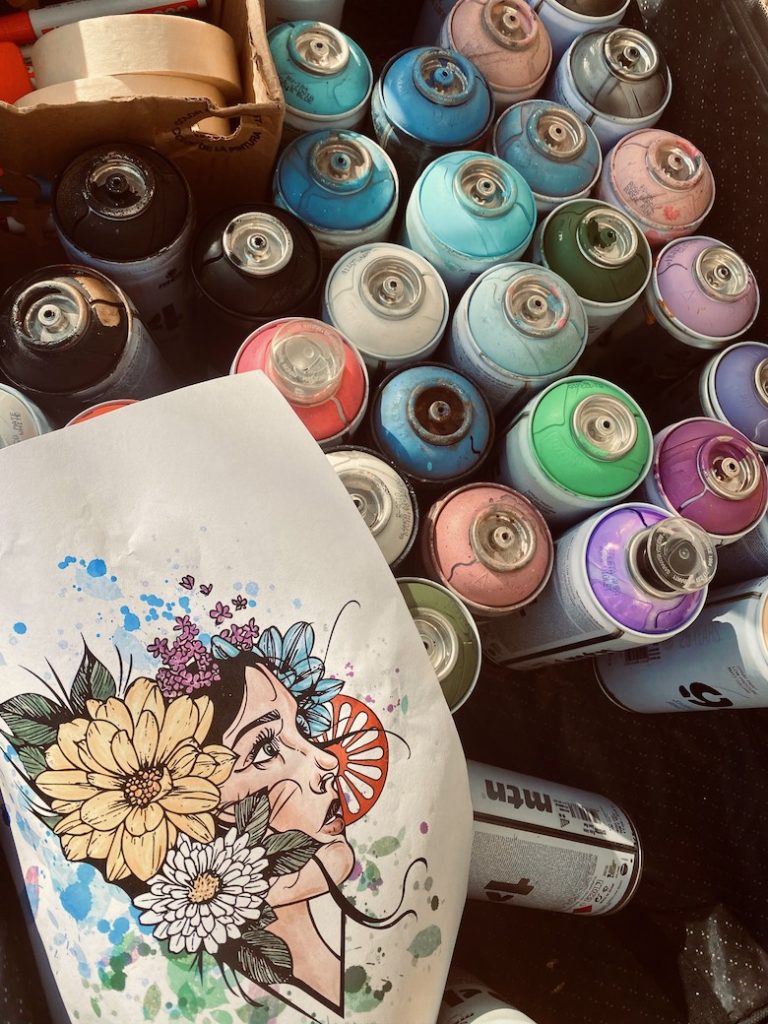When Estefanía Ruiz Molina, a young girl born in Cartagena, Spain, realized that she was buying a lot of T-shirts with painted protest messages, but that none of them were referring to the challenges that the Roma community is facing, nor any of them has been celebrating the inspiring people coming from the same community, she decided on a social and entrepreneurial venture. She has created her own line of clothing and jewelry, called Mil Duquelas Puro Arte, which has been worn on the streets in more than twenty countries in less than a year. It was then, having seen the first sketches that she had begun to draw at the time of her isolation, that she realized the importance of the project, and imagined how it would have been if there was already a brand that would reflect everything that signifies her identity.
I have been thinking about how I would have felt less misunderstood, and I imagined little girls, who would wear the character of Papusza on their T-shirts, going to classes empowered, without fear, and realized that if having had such an opportunity as a child, I might not have felt so lonely.
In her hometown of Cartagena, Molina studied Social Integration, specializing in intervention and social mediation, and then, by moving to Madrid, she continued her studies in the field of psychology, while at the same time, she was working as a social integration technician and mediator for Municipal Housing Company. She continued to expand her knowledge and specialized as a technician for gender-based violence, which led her to work in different programmes dedicated to women and single-parent families who have suffered gender-based violence. Her early involvement in the work of associations and projects of engaged art led her to work for a well-known fashion brand in Madrid, whose experience she translated into founding her own line of clothing and jewellery.
‘Mil Duquelas’ is designated for those who want to contribute to increasing the visibility of the Roma. The idea is to make our history known and break down the stereotypes that oppress us, giving us the opportunity to wear clothes that reflect who we are. Our designers have no boundaries, the project aims to ensure that people who are not Roma also learn about our history and share the pride of our identity.
The transformation of duquelas into art
The very name of her line of clothing and jewellery directly refers to the history of the Roma and the strength of their resistance, as well as the amazing ability to progress by turning pain into art as can be seen in the example of flamenco, but also in a number of other countless references in the fields of art, poetry, painting and music. Duquelas in the Kaló language, that is to say the language of the Spanish Gitanas, signifies sorrow and fatigue, so the name ‘Mil Duquelas Puro Arte’ reflects the Roma history and their ability to resist, and even to transform each of these duquelas into art. Her brand also, Molina continues, seeks to put an end to the silence that surrounds the Roma community, while at the same time offering to meet people who have broken stereotypes down, pushed the imposed boundaries and advocated for complete emancipation in society. On the clothes and jewellery that she designs, it is possible to find various motifs such as the Roma wheel, the Opre Roma inscription or printed photographs of Sofia Kovalevskaya, Alfreda Noncia Markowska, Ceija Stojka, Katarina Taikon and others.
The importance of their stories belongs to our people and therefore we want people to discover them. ‘Mil Duquelas’ wants everyone who wears our designs to be proud to wear something that reflects people with such a capacity for resistance and with so much history behind them.
In the conversation, Molina points out that this is her contribution to the society, a grain of sand in the struggle to recognize and restore the pride of her identity, but the struggle against antiromaism, as well. In this way, Mil Duquelas is becoming an important cog in this process, and through it she conveys numerous authentic interventions through art as well. One such artistic project was painting murals in the historic part of Madrid. The project was published in the Washington International Law Journal under the title A Global Reckoning: Answering Calls for Change and became a part of their symposium on human rights.
This mural represents the resilience of the Roma community. That innate ability to become a phoenix and to be reborn from its ashes once the third party has condemned it to be burned. Throughout history, our people have suffered innumerable persecutions, as well as inhuman and cruel treatment. We have been insulted and harassed. We have seen our loved ones die. We have suffered the criminalization of our identity. We felt accusatory looks despite our innocence. We had to leave our homes to save our lives. We have been victims over and over again, and yet nothing can be done to make us disappear. For the Roma have always risen, regardless of the damage that they have suffered. Many did not count on it, and they wanted to bury us, but they did not know that we were the seed.
Dialogues in public space
It is precisely the message, about a seed that grows back out of the ground, that is written on the mural and gives a voice to those Romani women whose struggles remain invisible, and about whom nothing is read, heard nor written. Still, even painting the wall alone required a lot of effort. After the La Latina district committee opposed to the drawing of the mural, convincing them that justifying and acknowledging the Roma struggle was a part of the “ideology” to which they opposed, Molina decided to go all the way and ask the neighbours for their permission. She hired a muralist to help her with the painting, while she also spoke to the police that came in with the intention of stopping the artistic action. Finally, after having avoided attempts made by the police, she managed to talk to those responsible for the central district of the city of Madrid. They understood the importance and beauty of the work, so they were able to continue making it without fear of arrest and removal.
This mural, which found its place on a building on the Plaza de Cascorro, represents a portrait of a Romani woman, painted and exhibited for the first time in a public space in Madrid. Women are raising their voices and fighting for a feminist and anti-racist society, and Molina looks herself up to her mother and aunts, strong and courageous women who grew up in the deprived Pan Bendito district of Carabanchel.
Romani women were poorly recognizable due to multiple discrimination conditioned by machismo, antiromaism and by division of the society into classes, as well. However, it is obvious that the Romani woman is the past, the present and the future. Even though the society does not recognize it, we represent the Roma resistance written in capital letters. We are the courage and the revolution. Overcoming all that and continuing to fight is an example to the world. And I know that one day the fight will end for us. The pain will be just a memory that will appear in history books.
Art is a part of the Romani culture. The transformation of experiences, stories and pain into the art is what the Roma community has been doing all its life. As Molina concludes, this is one of the reasons for their great ability to resist and resilience, because what is called emotion management today, the Roma have been doing for centuries. That is why their music is a mixture of pain and celebration. That is why Papusza wrote in spite of her difficult life. That is why the survivors of the concentration camps tell, through painting or poetry, what they have experienced. Pain, resistance and art go hand in hand with the Roma people.


















